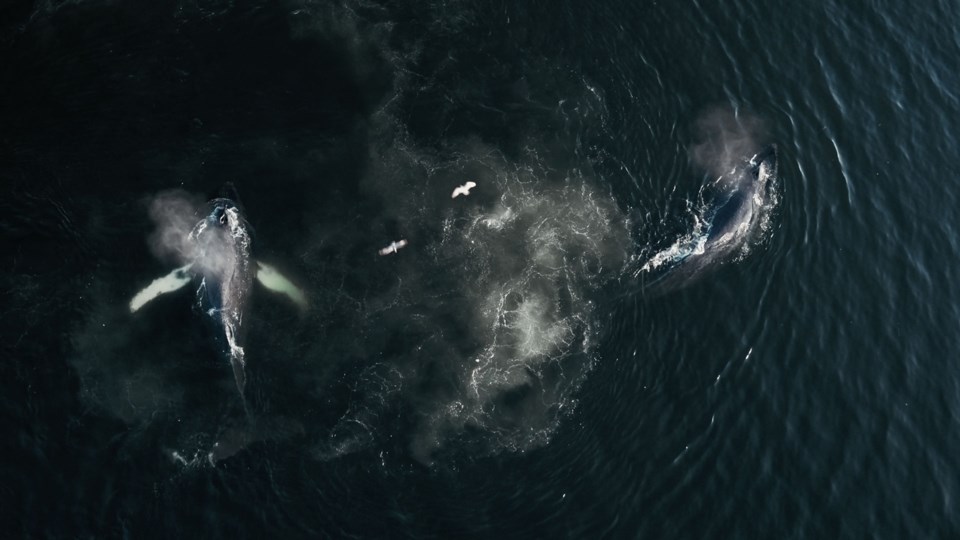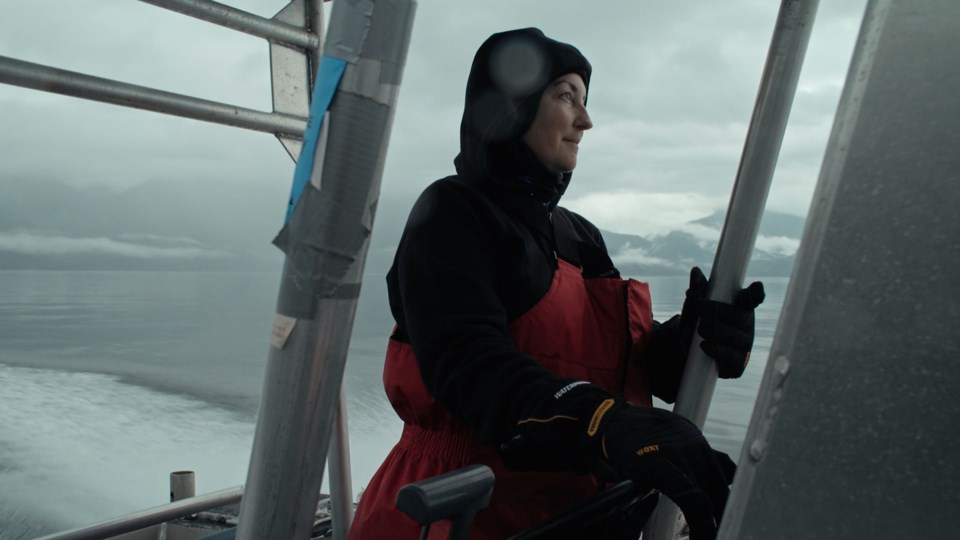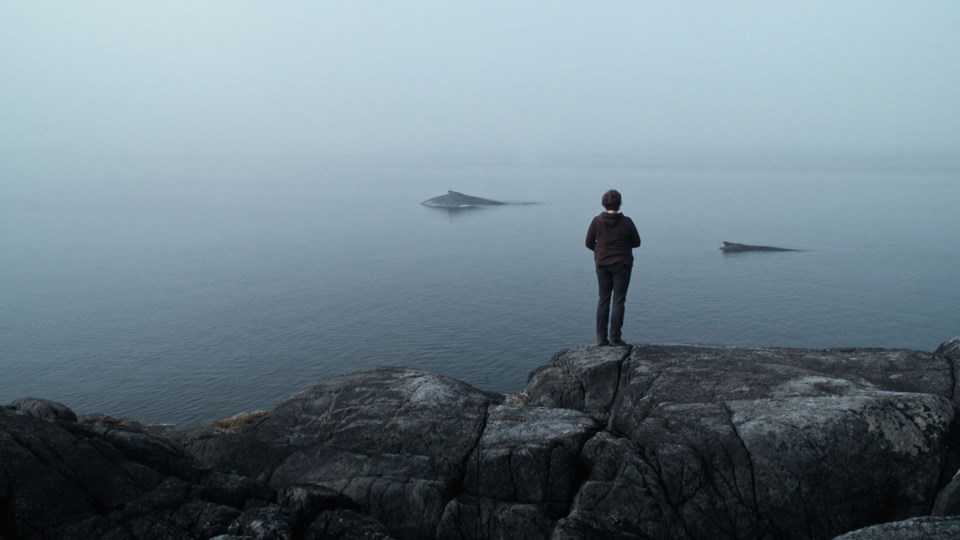In the realm of environmental documentaries, The Whale and the Raven is something of an outlier.
The feature-length documentary — which was co-produced by the National Film Board of Canada and won the WIFTV Artistic Merit Award at the 2019 Vancouver International Film Festival — delves into the impact of tanker traffic on the whales that sing and strive to survive in the coastal waters of northern С����Ƶ
There have been other films — remarkable and important films, such as Fractured Land, Haida Gwaii: On the Edge of the World and KONELĪNE: our land beautiful — that have similarly told the story of the intersection of wildlife and commerce and Indigenous activism.
��

Where The Whale and The Raven differs is in its point of view — that of an outsider to Canada — director Mirjam Leuze, who is based in Cologne, Germany and anchors the story in the experiences of the two researchers dedicated to studying the unique behaviour of humpback whales, fin whales and orcas.
The film also positions the whales themselves as characters with their own personalities and relationships, and begs a couple of questions: Are whales sentient beings? If they are (and the film arguably leaves you with the conclusion that they are), how do we change our interactions with them? And how dare we destroy their home?
The Whale and The Raven has been a hit in Germany, where it opened the prestigious Dok Fest in Munich and kicked off a lengthy theatrical run in September.
“In Europe, there is a love and appreciation for the nature we have here in Canada that I think is greater than our appreciation, because it’s so different from the landscape in Europe, which is densely urban and very populated,” says Andrew Williamson, the Vancouver-based producer who co-produced The Whale and the Raven with Henrik Meyer.
Williamson previously worked on the Knowledge Network documentary series, Emergency Room: Life and Death at VGH. On the surface, the two projects don’t seem to have much in common, but Williamson says Emergency Room — which required him to negotiate a complicated access agreement with VGH — prepared him for the process of developing an equally complicated filming protocol agreement with the Gitga’at Nation.

“Even though this wasn’t an Indigenous film, it was shot entirely in Indigenous territories, and so I felt very early on that we had to formalize that relationship,” says Williamson. “You can’t just go into someone’s home and film and leave again. There needs to be more to it than that.”
Thus, the production agreed to consult with a Gitga’at advisory council throughout the filming process, and contributed training opportunities and employment.
“We were all very proud of where we ended up with that agreement, and the access we had, including access to some sacred parts of that territory, and the contributions that we made that kind of evened out the exchange a little,” says Williamson.
Although the film is about whales, it is anchored in the story of Hermann Meuter and Janie Wray, who founded the Cetacea Lab on Gil Island and are allies of the Gitga’at Nation in their fight against oil tankers.
Meuter and Wray were married when the project was proposed but had separated by the time the crew arrived on Gil Island to begin filming — which was the first of several monumental, but not insurmountable, challenges for Williamson and co.
There was also the challenge of transporting equipment and personnel from Vancouver to the fly-in community of Gil Island, and the challenge of filming the whales in a way that wouldn’t be disruptive.
“I thought it would be more [like a] BС����Ƶ wildlife documentary, but when you’re working with people who know the animals very well, you’re not plunging into the water beside them,” says Williamson. “You’re not running beside them trying to get shots. The visuals to me feel really real as a result. It’s like what’s like to be there as a person.”
“I’m incredibly proud of the film, in part because this is the kind of film that I’ve always wanted to make,” adds Williamson. “I think the conversation about the whales is important, but moreover, I think it’s a period of reflection now about how we’re living on the Earth, and I think this is an important part of that conversation. Here in the Lower Mainland, we’re looking down the barrel of the TMX pipeline expansion, and I would hope that anyone who saw this film had the opportunity to reflect on that.”
The Whale and The Raven screens Jan. 10 to 16 at VIFF Vancity Theatre.
��
��




